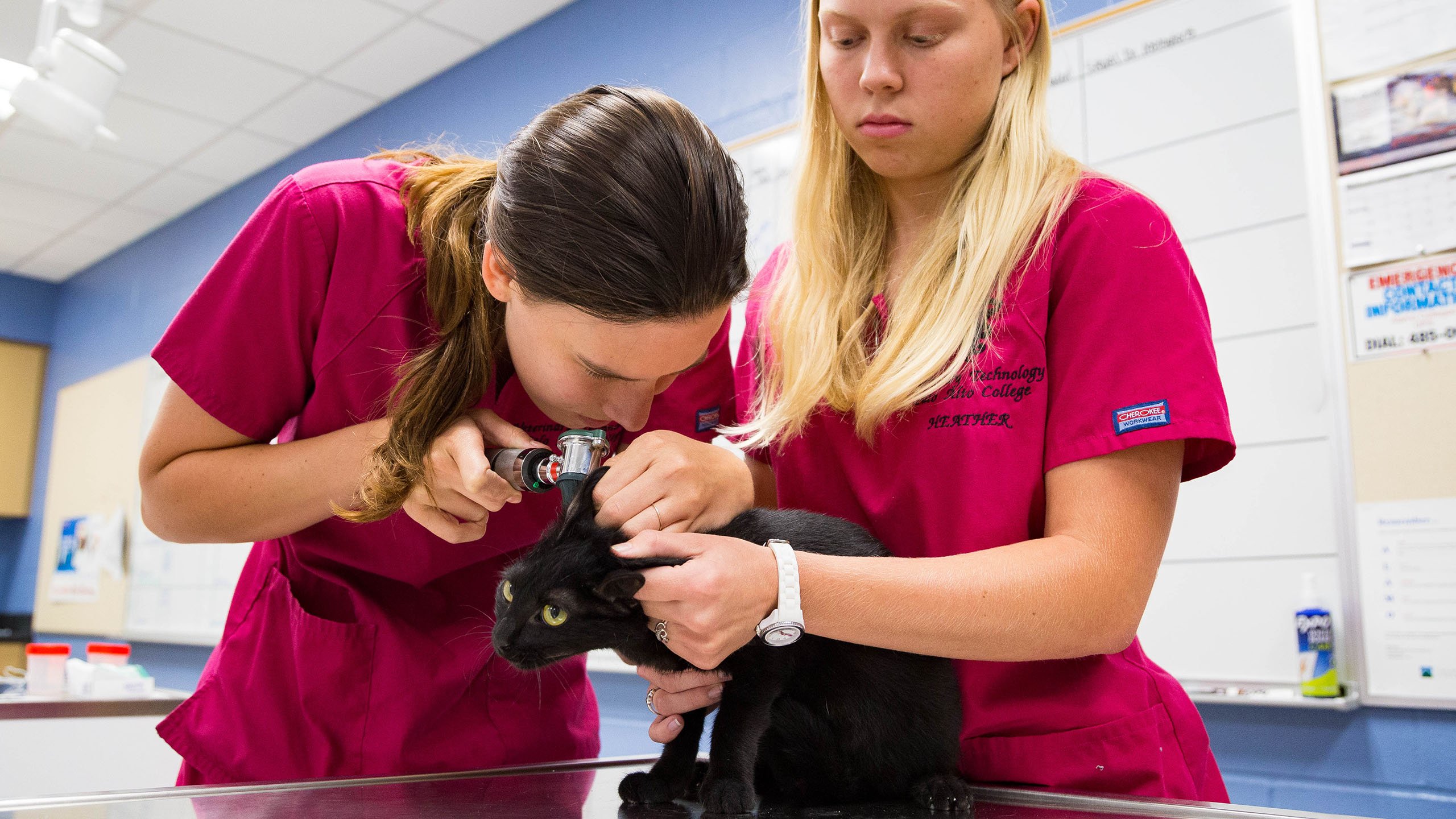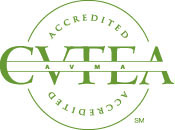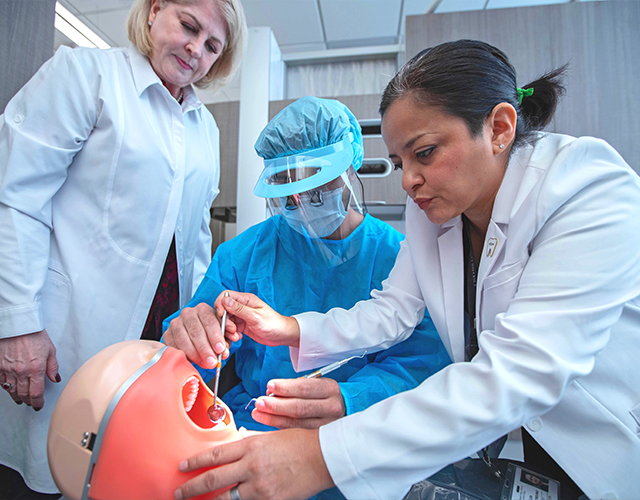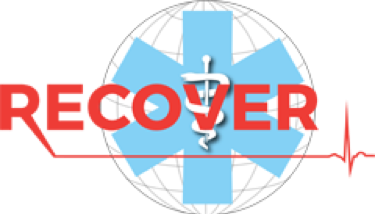
Veterinary Technology
Perform medical tests in a laboratory environment for use in the treatment and diagnosis of diseases in animals. Prepare vaccines and serums for prevention of diseases. Prepare tissue samples, take blood samples, and execute laboratory tests, such as urinalysis and blood counts. Clean and sterilize instruments and materials and maintain equipment and machines. May assist a veterinarian during surgery.
|
Jobs available locally 1,248 |
Demand Locally +3 % |
Annual Wage Range $27,202 – $50,216 |
Feed, water, and examine pets and other nonfarm animals for signs of illness, disease, or injury in laboratories and animal hospitals and clinics. Clean and disinfect cages and work areas, and sterilize laboratory and surgical equipment. May provide routine postoperative care, administer medication orally or topically, or prepare samples for laboratory examination under the supervision of veterinary or laboratory animal technologists or technicians, veterinarians, or scientists.
|
Jobs available locally 1,008 |
Demand Locally +3 % |
Annual Wage Range $22,623 – $45,906 |
Teach courses in health specialties, in fields such as dentistry, laboratory technology, medicine, pharmacy, public health, therapy, and veterinary medicine.
|
Jobs available locally 10,258 |
Demand Locally +1 % |
Annual Wage Range $50,998 – $214,067 |
Program Level:
Degrees, Certificates
Program Type:
Face-to-Face
Department:
Veterinary Technology
Institute:
Health & Biosciences
College:
PAC
What is a licensed veterinary technician?
A Licensed Veterinary Technician (LVT) is a passionate and skilled professional devoted to providing exceptional care for animals. In Texas, LVTs undergo 2-4 years of comprehensive education, pass both national and state examinations, and engage in ongoing learning to stay sharp. Working closely with veterinarians, they handle responsibilities such as gathering medical histories, assisting in surgeries, and educating pet owners, though they do not diagnose or prescribe. With their expertise in various fields, including military, education, and animal control, LVTs can also specialize in exciting areas like anesthesia and emergency care through CVTS.
What is a veterinary technician assistant?
|
As a veterinary assistant, you can support the veterinarian, veterinary technician, or both in their daily tasks. Your duties may include:
Training programs are available for veterinary assistants; some are trained on the job. |
If you are interested in science, research in public health, and helping animals, Veterinary Technology is the career for you. Personal attributes that contribute to a successful career as a veterinary technician include:
|
|
|||||||||||||
Mission statement
The mission of the Palo Alto College Veterinary Technology Program (PACVTP) is to teach students to work as veterinary healthcare professionals; to interact with other healthcare professionals and patients in a professional and ethical manner; to develop the highest possible technical skills required in the veterinary field; to always demonstrate the utmost respect and concern for the well-being of the patients they serve; to demonstrate creative thinking and problem solving; and to provide assistance to graduates and facilitate continuing educational opportunities for fellow technicians.
Program Overview
The Veterinary Technology program at Palo Alto College is a rigorous AVMA-CVTEA accredited 2-year full-time cohort program. Offering training in laboratory techniques, office protocols, emergency and specialty medicine, it covers small, large, exotic, and laboratory animal care. Established in 1996, the program has maintained full accreditation since 1998. Students must master 350 essential skills in a 15,000 sq. ft. facility, completing assigned animal care duties, including weekends and holidays. A minimum grade of 75% is required to remain in the program, with one-time readmission considered if space allows. Courses older than 3 years cannot count toward the degree.
Veterinary Technology Program Highlights
|
Veterinary Technology Career Areas & Employment PositionsThe U.S Bureau of Labor Statistics states that employment of veterinary technicians is projected to grow 19% from 2014-2024. Career opportunities include:
|
Degrees OfferedVeterinary Technology, A.A.S. |
Certificates OfferedVeterinary Assistant Level 2 Certificate |
| The Veterinary Technology AAS program at Palo Alto College meets the educational requirements for licensure in the state of Texas. After completing the program, students will be eligible to take a nationally recognized exam in addition to passing a state of Texas exam which will allow them to become credentialed and practice in Texas. Requirements for licensure in other states or territories may be different from licensure requirements in Texas. To find out about other state licensure requirements, visit the American Veterinary Medical Association website. |
 The Palo Alto Veterinary Technology Program received initial accreditation in 1998 and has maintain full accredited from the American Veterinary Medical Association Committee on Veterinary Education and Activities. |
Veterinary Technician National Exam (VTNE) Pass Rate
Total* January 1, 2022–December 31, 2024
32Number first-time candidates that have taken the VTNE |
93.75%VTNE pass rate annual percentage *Three-year pass percentage |
Contact Information
|
Skye Starbuck, LVT Interim Program Coordinator |
Veterinary Technology (VT–111) |
|
|
Dr. Jeffrey Koch Director |
||
|
Rayvin Burget, LVT Academic Program Specialist/Program Recruiter |
Veterinary Technology (VT-109) |
|
|
Malorie Vallejo Certified Student Advisor |
210-486-3668 |
|
|
Maria Olmos Administrative Services Specialist |
Veterinary Technology (VT–100) |





